Think of the grocery store with your favorite craft beer selection. It’s a reasonable guess that a bulk of shelf space goes to IPA, or India Pale Ale, a style driven by hops and generally landing in the 5.5%–7.5% ABV range. (Watch those numbers soar in Imperial beer.) IPA gets the spotlight because no other craft style comes close in popularity.
But dig into IPA and you’ll find myriad substyles that display brewer creativity and ingredient versatility, from the crushable Session IPA all the way to the devilish Triple IPA. Perhaps most notable right now are a pair of “dueling” and distant IPAs: the West Coast IPA and the East Coast IPA. Before you commit to a six-pack of either, let’s explore their unique flavor profiles.
What is a West Coast IPA?
A West Coast IPA leans into hop bitterness, measured as IBU, but brewers often strive for clean bitterness, meaning it’s perceived as smooth instead of harsh and astringent. In turn the malt flavor is downplayed in a West Coast IPA to give hops their full expression. And when you look at a West Coast IPA in a glass, it’s usually bright and clear — a sharp contrast to the telltale haze of East Coast IPA.
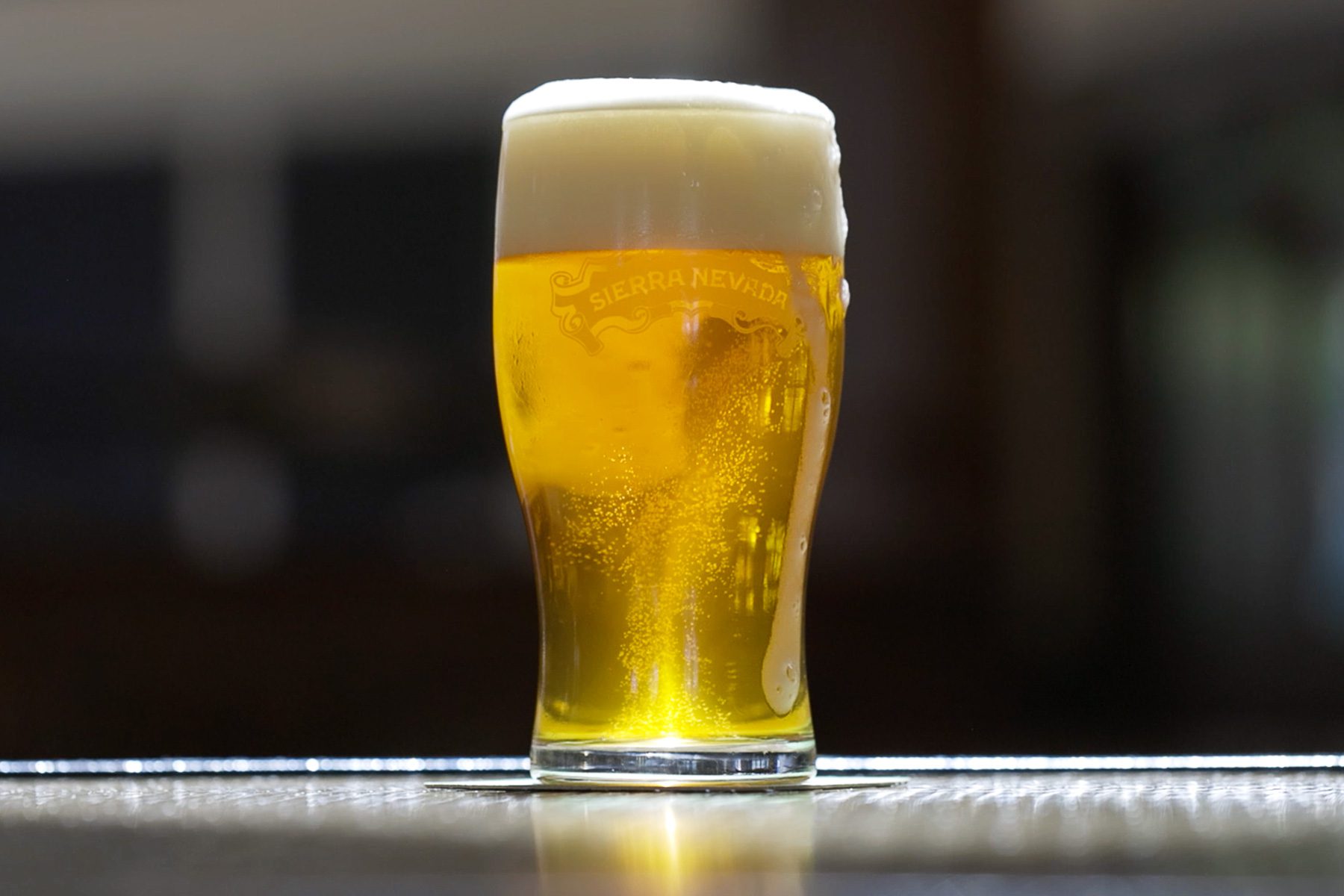
Origin and Characteristics of the West Coast IPA
No surprise that West Coast IPA originated with craft brewers on that side of the map. They ramped up hops, especially in the boil kettle, to extract more bitterness alongside flavors of citrus and pine. Anchor Brewing turned heads with Liberty Ale in the ’70s, and some consider our 1981 launch of Celebration IPA, with its steep 65 IBU, a precursor to West Coast IPA.
But Celebration has a rich malt body, which is dialed back in today’s archetypes of West Coast IPA like Russian River’s Pliny the Elder or Firestone Walker’s Union Jack.
Typical Flavor Profiles
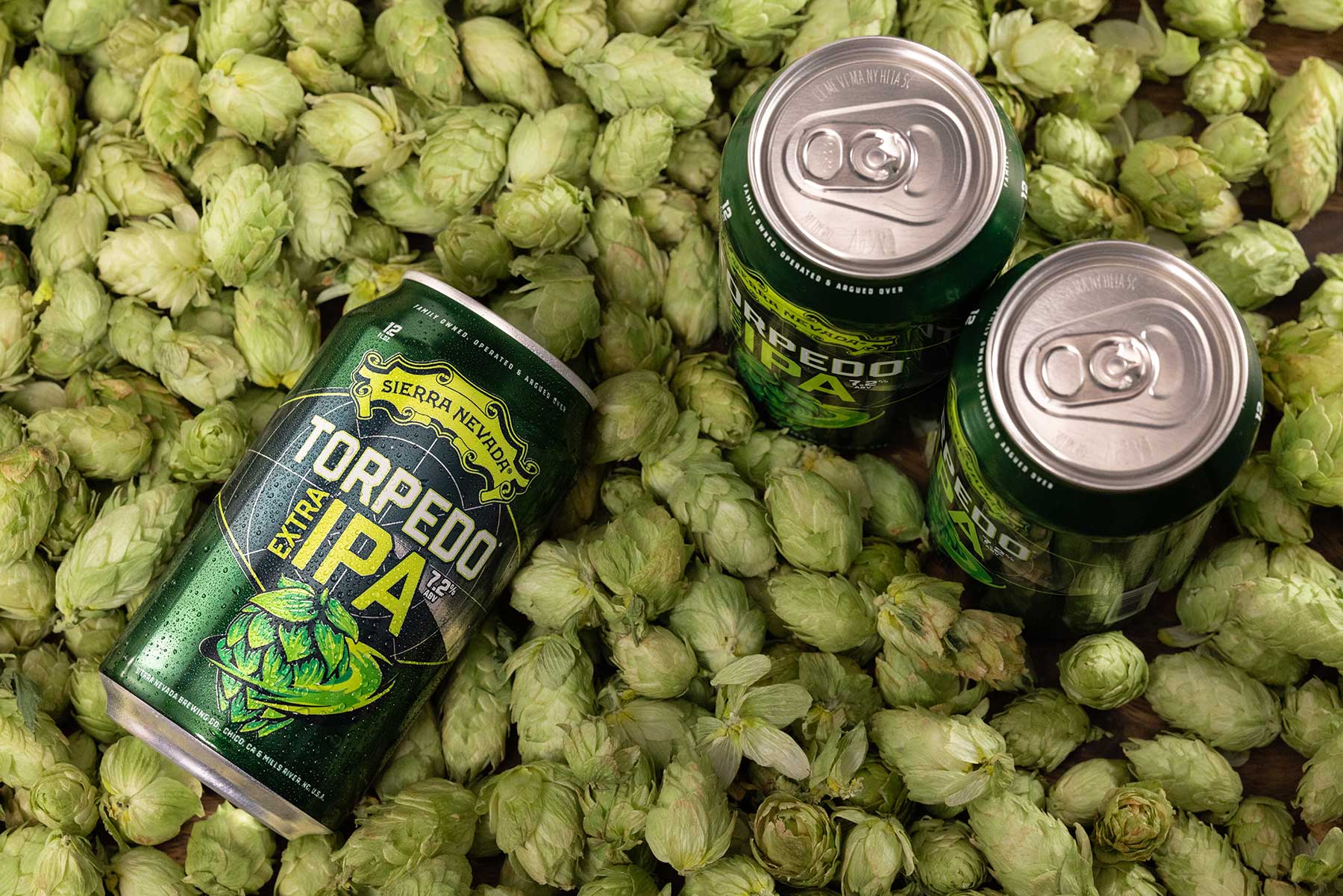
West Coast IPAs can feature a range of hop aromas and flavors, but citrus and pine are staples. The pine can register as the aromatic needles of a tree or even more intense like sticky pine resin. Torpedo IPA delivers there, but it also weaves in notes of tropical fruit thanks to Citra hops.
The beer’s balance will always skew toward hops in a West Coast IPA. Don’t necessarily expect a chewy malt body; the grains are there to prop up hops. And you can bet on a dryer finish — that nice smack that draws you back for more.
Hops Varieties Commonly Used in West Coast IPAs
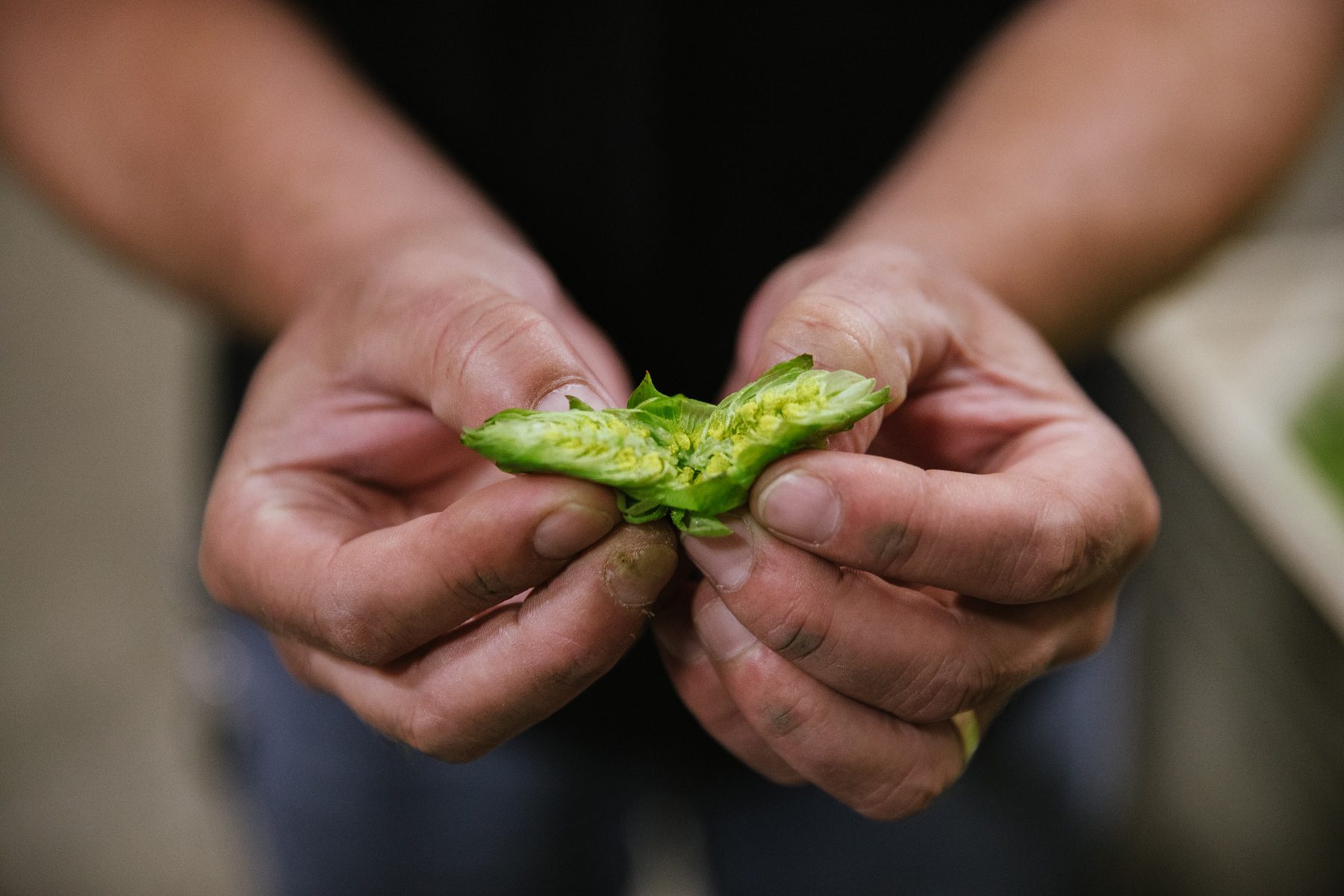
Sierra Nevada Pale Ale launched the Cascade hop, and it’s a go-to for many West Coast IPAs alongside other iconic “C” hop varieties like Centennial and Chinook. Newer hop varieties including Amarillo, Citra, and Simcoe can lend a range of fruity and floral characteristics to a West Coast IPA. Atomic Torpedo IPA, which we consider a blend of West Coast IPA and East Coast IPA, features Mosaic in its hop lineup, known for berry-like aromas.
What is an East Coast IPA?
The East Coast IPA, more broadly known as a Hazy IPA or New England IPA, is all about fruit-forward hop flavor swirling in a silky malt body. And since they aren’t fully filtered before packaging — if at all — East Coast IPAs have a signature cloudy look, hence the Hazy IPA.
The Defining Traits of East Coast IPAs
The genesis of East Coast IPA was in New England after the turn of the century. Drinkers there latched onto the budding style’s thick and hazy appearance — they just look jam-packed with flavor — and the hops surged with fruity character. The word “juicy” is a common descriptor because, between the full body and distinct hops, East Coast IPAs can evoke biting into ripe citrus and tropical fruits.
And in East Coast IPAs, oats and wheat help create a velvety texture and perception of sweetness, while West Coast IPAs usually stick to 100% barley malt for that dryer finish.
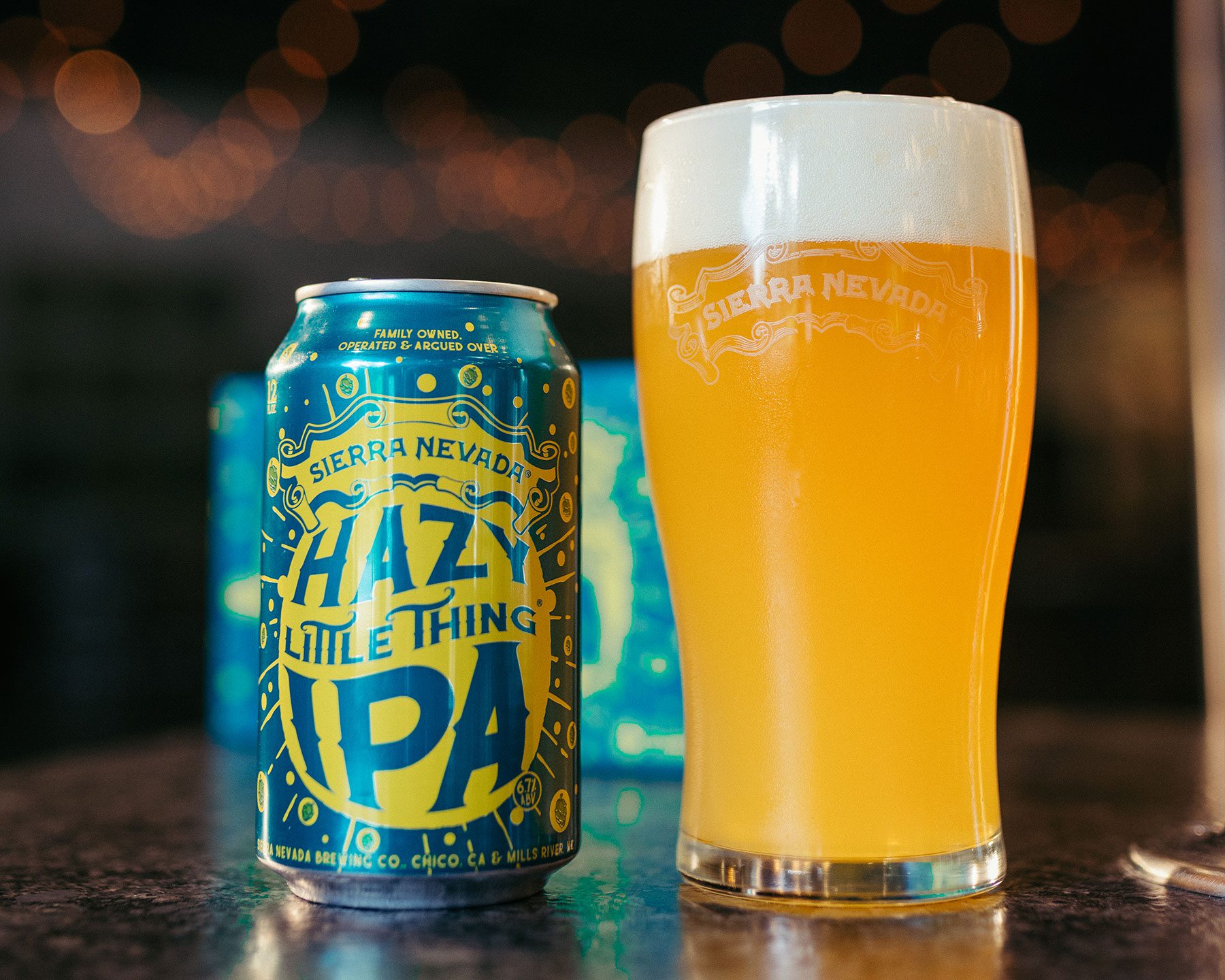
Typical Flavor Profiles
Juicy hops, silky malt, and modest bitterness define East Coast IPA, like our Hazy Little Thing, bursting with hoppy notes of orange and pineapple. But the Hazy IPA doesn’t stick to one lane; our Hazy IPA Pack shows the style’s range, whether that’s Sabro hops weaving in hints of coconut in Tropical Little Thing or the botanical terpenes in Dank Little Thing sparking an aroma that fills a room.
Preferred Hop Varieties on the East Coast
While the West Coast IPA is fond of classic varieties like Cascade and Centennial, newer hop varieties shine in East Coast IPAs. And since the style leans fruit-forward, brewers choose hops that serve up those aromas and flavors. Space-themed Comet, Strata, and Helios hops in our Cosmic Little Thing Hazy Double IPA create an interstellar wave of citrus, berries, and lychee. Citra, El Dorado, Mosaic, and Sterling hops give Juicy Little Thing its notes of guava, mango, and grapefruit.
And as the West Coast IPA plays up “hot side” hopping, which extracts more bitterness, the East Coast IPA amplifies dry-hopping on the “cold side” — once the beer has moved from kettles to chilly fermentation tanks. This method supercharges hop aroma and flavor, not bitterness.
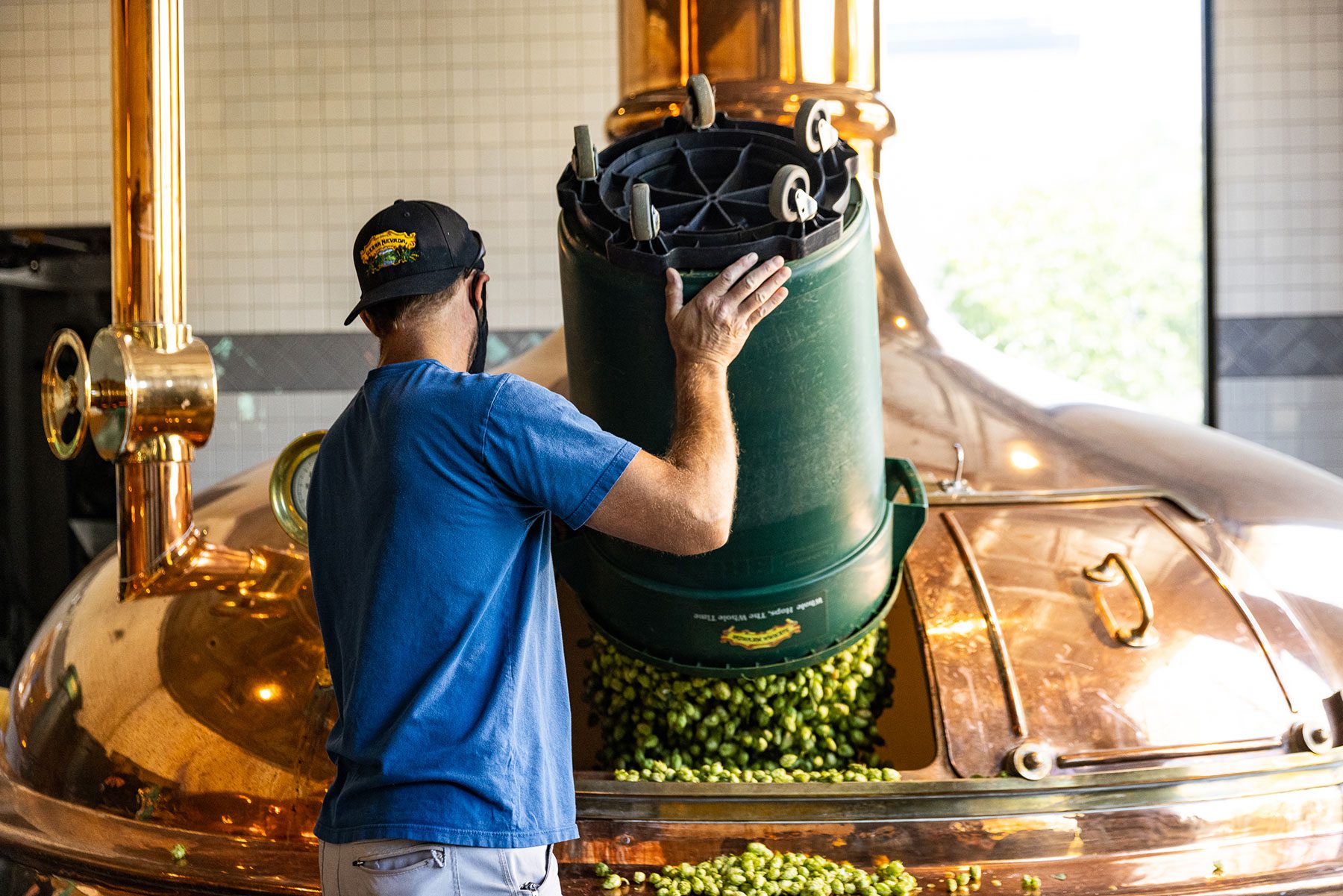
How do they compare?
There’s certainly more nuance than this, but three helpful distinctions between West Coast IPAs and East Coast IPAs are beer clarity, hop bitterness, and hop character:
- • Beer Clarity — West Coast IPAs are often crystal clear, shimmering as light catches the glass. Meanwhile the East Coast IPA earned the moniker Hazy IPA because it’s not clear; you can hold up a glass and not see your fingers on the other side.
- • Hop Bitterness — You’ll get plenty of it when drinking West Coast IPAs since brewers go big on hops during the boiling phase, which extracts their bittering qualities. East Coast IPAs restrain hop bitterness, instead elevating fruit-like flavors and a smooth, borderline sweet malt profile.
- • Hop Character — We’re talking aroma and flavor here. Hoppy notes of citrus and pine are the bedrock of West Coast IPAs, and while the same might exist in East Coast IPAs, expect more tropical character, the likes of guava, mango, and papaya.
Explore West Coast & East Coast IPAs
Just look to the Great American Beer Festival, and it’s clear these two IPA styles are beloved. The most-entered category in 2023? “Juicy or Hazy India Pale Ale” with 365 entries! But the West Coast IPA was on its heels at 301 entries.
At the store, it can feel like that many are on shelves too — overwhelming. Save your brain power and grab Hazy Little Thing IPA to start your East Coast IPA adventure, or let Torpedo IPA welcome you to the West Coast.




